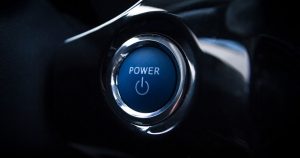 The thought leaders at Toyota recognize that greenhouse gases lead to climate change, and exhaust is polluting our air. They’re a genuine threat to our happy, healthy lives on planet Earth. Toyota recently released a plan for sustainable energy, and they’re entering exciting new territory in the world of auto manufacturing. Keep reading to explore Toyota’s innovative ideas for developing an environmentally friendly brand.
The thought leaders at Toyota recognize that greenhouse gases lead to climate change, and exhaust is polluting our air. They’re a genuine threat to our happy, healthy lives on planet Earth. Toyota recently released a plan for sustainable energy, and they’re entering exciting new territory in the world of auto manufacturing. Keep reading to explore Toyota’s innovative ideas for developing an environmentally friendly brand.
A Sustainable Future
Toyota is engaged in extensive research to advance its approach and help work toward resolving the pressing environmental issues we face today. Through its Global Environmental Challenge 2050, these ideas were unveiled at Toyota’s 2015 Thought Leadership Summit in California and recently reconfirmed.
Can you believe Toyota introduced the hybrid Prius to America almost 20 years ago? We’ve all learned a ton since then, and we know traditional fuel reserves won’t last forever. Consumers demand strategies to ensure eco-friendly cars lead the way to a greener tomorrow — and Toyota is listening. With modern technology, Toyota is committed to engineering a wide range of eco-friendly cars like the conceptual iQ EV.
Environmental Strategies
Toyota’s plan addresses how this automaker will minimize environmental impact. The company set itself upon six challenging tasks in four areas: carbon, water, materials, and biodiversity. These challenges are designed to push the company far beyond cleaner emissions to embrace the overall goal of net positive change by 2050.
Carbon
The first order of business for Toyota is climate change. Engineers aspire to completely remove greenhouse gas emissions from its operations by 2050. Toyota also pledges to reduce vehicle emissions to an incredible 90 percent from a 2010 baseline within the same timeframe. To achieve this lofty goal, Toyota will build vehicles with alternative powertrains and help expand EV charging infrastructure.
Biodiversity
Toyota recognizes that not only is air quality important, but the diversity of living organisms and their habitats are also essential to our ecosystem. Toyota’s major facilities will recognize the highest standards of conservation, and it promises to spearhead projects that protect threatened and endangered species.
Materials
Toyota’s material strategy focuses on eliminating waste, conserving natural resources, and reducing packaging material 5 percent by 2021. By sharing these tactics with other manufacturers, Toyota hopes to achieve these goals worldwide.
Water
Just as clean air and a healthy ecosystem are essential to our biodynamic world, so is fresh water. The final part of Toyota’s challenge is to reduce water withdrawals by incorporating waterless manufacturing technologies and utilizing only closed-loop systems for a revolutionary 100 percent recycled water system.
Looking Ahead to a Green Future
Toyota intends to jump right in and promote the widespread accessibility of its eco-friendly cars. Looking ahead to 2050, Toyota has set itself to the challenge of building new cars with zero CO2 emissions.
Today, Toyota wears the green crown when it comes to the illustrious Prius Prime, the most advanced hybrid currently on the market. Don’t forget Toyota’s full lineup of hybrids including Camry, Highland, RAV4, and Avalon.
Toyota’s contribution to the environment is clear. As we work toward the realization of a sustainable society, its programs are leading the way.
“Electric Car start ignition button” via Flickr by piviso. Used with permission via CC0 1.0 / cropped from original.



